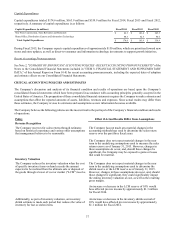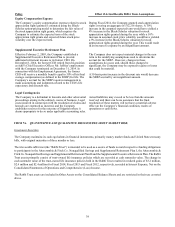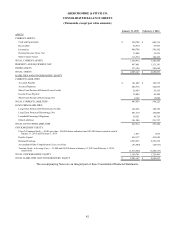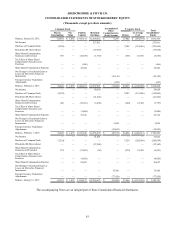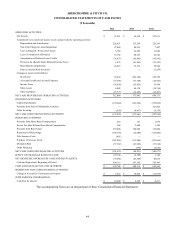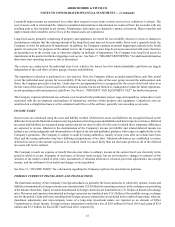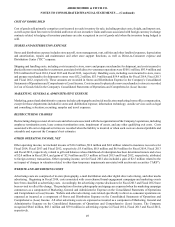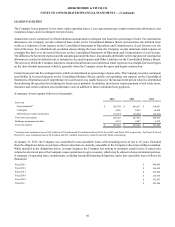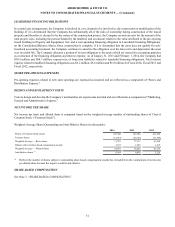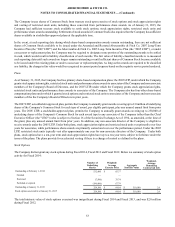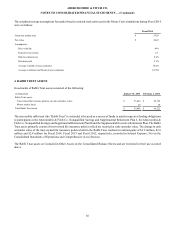Abercrombie & Fitch 2014 Annual Report Download - page 46
Download and view the complete annual report
Please find page 46 of the 2014 Abercrombie & Fitch annual report below. You can navigate through the pages in the report by either clicking on the pages listed below, or by using the keyword search tool below to find specific information within the annual report.
ABERCROMBIE & FITCH CO.
NOTES TO CONSOLIDATED FINANCIAL STATEMENTS — (Continued)
46
RESTRICTED CASH
Any cash that is legally restricted from use is recorded in Other Assets on the Consolidated Balance Sheets. The restricted cash
balance was $14.8 million and $26.7 million on January 31, 2015 and February 1, 2014, respectively. Restricted cash includes
various cash deposits with international banks that are used as collateral for customary non-debt banking commitments and deposits
into trust accounts to conform to standard insurance security requirements.
RABBI TRUST ASSETS
See Note 4, “RABBI TRUST ASSETS.”
RECEIVABLES
Receivables primarily include credit card receivables, construction allowances, value added tax (“VAT”) receivables and other tax
credits or refunds.
As part of the normal course of business, the Company has approximately three to four days of proceeds from sales transactions
outstanding with its third-party credit card vendors at any point. The Company classifies these outstanding balances as credit card
receivables. Construction allowances are recorded for certain store lease agreements for improvements completed by the Company.
VAT receivables are payments the Company has made on purchases of goods that will be recovered as those goods are sold.
INVENTORIES
Inventories are principally valued at the lower of cost or market on a weighted-average cost basis. The Company writes down
inventory through a lower of cost or market adjustment, the impact of which is reflected in Cost of Goods Sold in the Consolidated
Statements of Operations and Comprehensive (Loss) Income. This adjustment is based on management's judgment regarding future
demand and market conditions and analysis of historical experience. The lower of cost or market reserve for inventory was $12.7
million and $22.1 million as of January 31, 2015 and February 1, 2014, respectively.
Additionally, as part of inventory valuation, inventory shrinkage estimates based on historical trends from actual physical inventories
are made each period that reduce the inventory value for lost or stolen items. The Company performs physical inventories on a
periodic basis and adjusts the shrink reserve accordingly. The shrink reserve was $11.4 million and $13.6 million at January 31,
2015 and February 1, 2014, respectively.
The inventory balance, net of reserves, was $460.8 million and $530.2 million at January 31, 2015 and February 1, 2014,
respectively. These balances included inventory in transit from vendors of $56.1 million and $76.4 million at January 31, 2015
and February 1, 2014, respectively. Inventory in transit is considered to be merchandise owned by the Company that has not yet
been received at a Company distribution center.
OTHER CURRENT ASSETS
Other current assets include prepaid rent, current store supplies, derivative contracts and other prepaids.
PROPERTY AND EQUIPMENT
Depreciation and amortization of property and equipment are computed for financial reporting purposes on a straight-line basis
using the following service lives:
Category of Property and Equipment Service Lives
Information technology 3 - 7 years
Furnitures, fixtures and equipment 3 - 15 years
Leasehold improvements 3 - 15 years
Other property and equipment 3 - 20 years
Buildings 30 years



